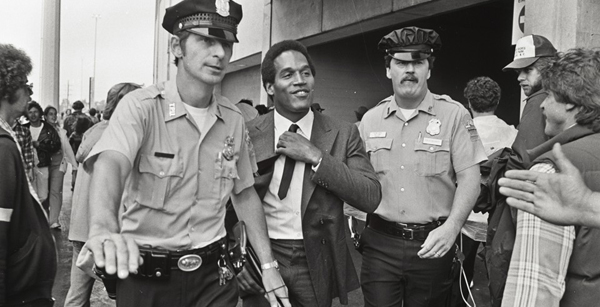
Josh Reviews O.J.: Made in America
I was blown away by how much I enjoyed Ryan Murphy’s ten-episode The People v. O.J. Simpson: American Crime Story. I loved it so much that I was eager to stay in that world and learn still more about everything and everyone involved in the O.J. trial. As much as I had been hearing, for months now, how great The People v. O.J. Simpson was, I’d also been hearing incredible things about Ezra Edelman’s documentary O.J.: Made in America. So, after finishing The People v. O.J. Simpson, I did not delay in diving in to O.J.: Made in America. I was astounded to confirm for myself that Made in America is at least as good as, if not better than, The People v. O.J. Simpson. It is an extraordinary achievement in documentary filmmaking and a riveting, incredibly relevant piece of modern American history.
O.J.: Made in America is a five-part documentary series, made by ESPN Films for their 30 for 30 series. Produced and directed by Ezra Edelman, it runs a staggering eight hours in length. That might make it seem like watching O.J.: Made in America is a daunting undertaking, but I found this documentary to be hugely gripping from start to finish.
Whereas The People v. O.J. Simpson told the story of the O.J. trial, Made in America tells O.J.’s complete life story. We don’t even get to the murders of Nicole Brown Simpson and Ron Goldman until part three. You might think the story of O.J.’s early life would be boring, and that as a viewer you’d be eager for the documentary to hurry up and get to all the juicy intrigue of the trial. But I was instantly engrossed and fascinated by the story of O.J.’s rise to fame and stardom, on the football field and off of it. It was interesting to explore O.J.’s step-by-step rise to his status as a well-known and beloved star. It’s also incredibly sad. Watching the early footage of a happy, smiling young O.J., you can’t help but wonder, just how did it all go so wrong? That is one of the main stories of this documentary.
But what I hadn’t realized going in was that Mr. Edelman’s documentary wasn’t designed just to chart the rise and fall of one man, Orenthal James Simpson. No, Made in America is also a fascinating and insightful history of race relations in Los Angeles. The most revelatory section of the documentary, and the episode that made my Best Episodes of TV in 2016 list, was “Part Two,” which dug deep into the years of abuse (both real and perceived) of the African-American community by the L.A.P.D. (Los Angeles Police Department). Of course I knew of the Rodney King beatings (and the eventual acquittal of the police officers responsible), but “Part Two” also explores the shooting of Eula Love on her front lawn in 1979 and the shooting of young Latasha Harlins by a Korean grocer in 1991, as well as 1987′s “Operation Hammer” and the accompanying arrests of thousands of African-Americans, and also the accusations of racism against L.A.P.D. Daryl Gates, among other incidents. “Part Two” almost spends more of its run-time on these events than it does on the life of O.J. Simpson.
In so doing, that episode, and this series, finally began to allow me to understand something that has long-since perplexed me: how so many African-Americans at the time were able to ignore the mountain of evidence against O.J. in their fervent belief that he was innocent. Made in America presents a tough-to-watch history of terrible transgressions made by the L.A.P.D. against the African-American community, and by doing so allows one to begin to understand how so many people came to believe, deep in their hearts, that the L.A.P.D. would never, ever, ever give a fare shake to a black person. This is the racial divide that burst out into the public arena during the spectacle of the O.J. trial, and this is the racial divide that is still so prominent across the U.S. today, though some would choose to deny it.
It is this which is the main story told by O.J.: Made in America. Not just the tragic tale of O.J.’s rise and fall, but about the context for those events: the complicated history of race-relations in this country, specifically in Los Angeles. Thus, Made in America is a tremendously important film, one that I wish every American would take the time to watch. Mr. Edelman’s in-depth film allows us to step into the mindset of the Los Angeles African-American community at the time of the O.J. trial. Sadly, things are not so different now than they were then.
Mr. Edelman’s film is extraordinarily well-researched, with a wealth of archival footage and an astonishing array of new interviews with everyone you’d want to hear from in connection to O.J. Simpson, and especially with his trial. Several of O.J.’s (former) friends provide fascinating insight into the man O.J. was/is and their relationship to him. And the newly conducted interview with Mark Fuhrman is extraordinary. It truly has to be seen. I also particularly enjoyed hearing from the real Marcia Clark (after so thoroughly enjoying Sarah Paulson’s depiction of her in The People v. O.J. Simpson).
O.J.: Made in America is important television. This is not a dull, dry history lesson, but rather an edge-of-your-seat piece of entertainment that is compelling and heartbreaking. I wish the story being told wasn’t so ferociously relevant.
